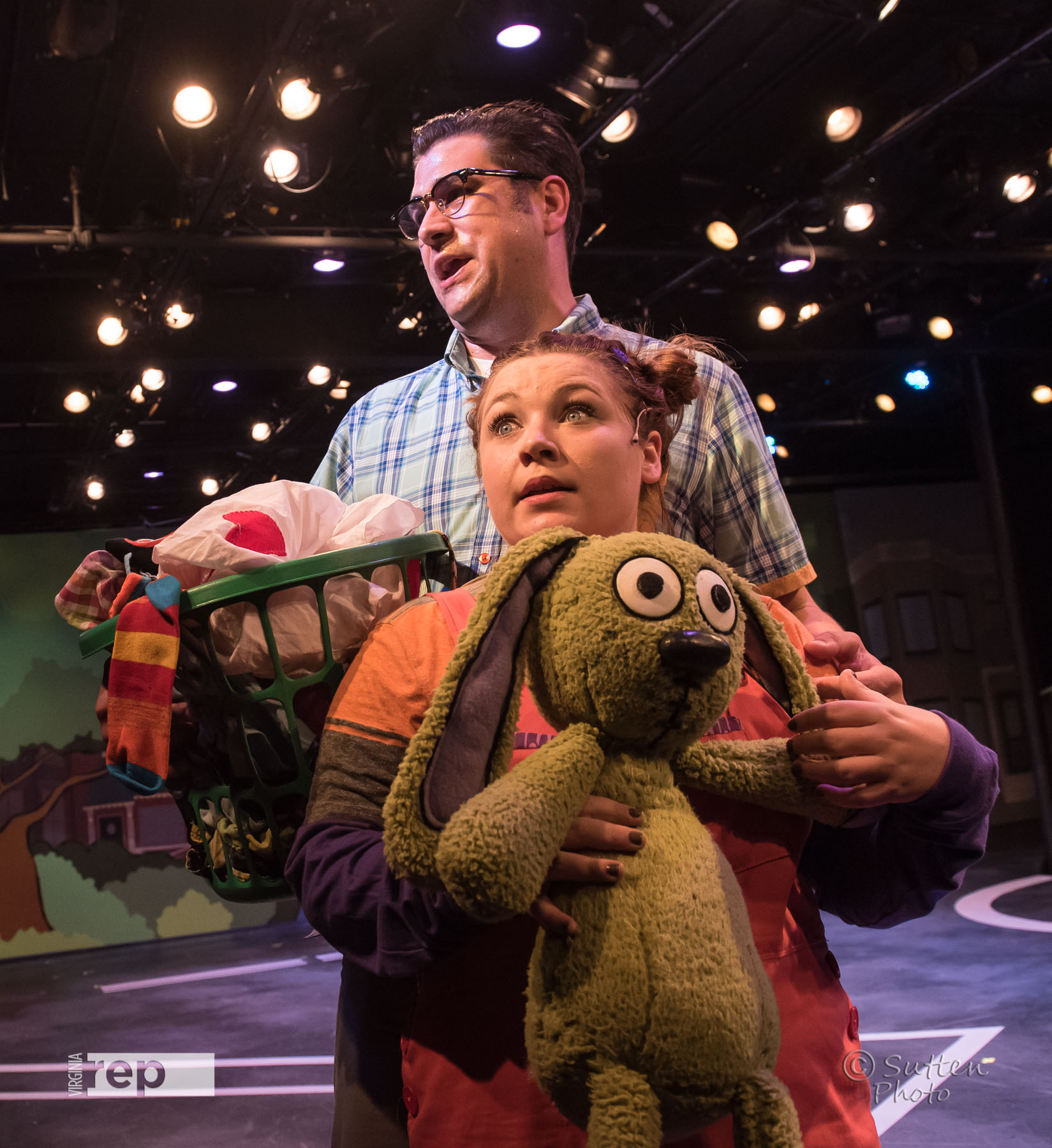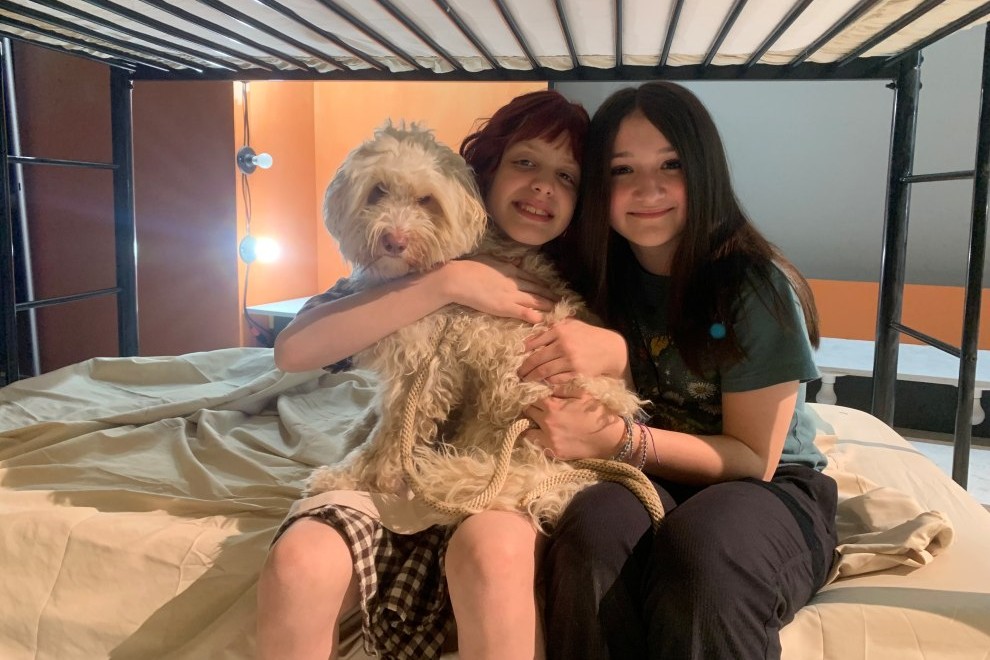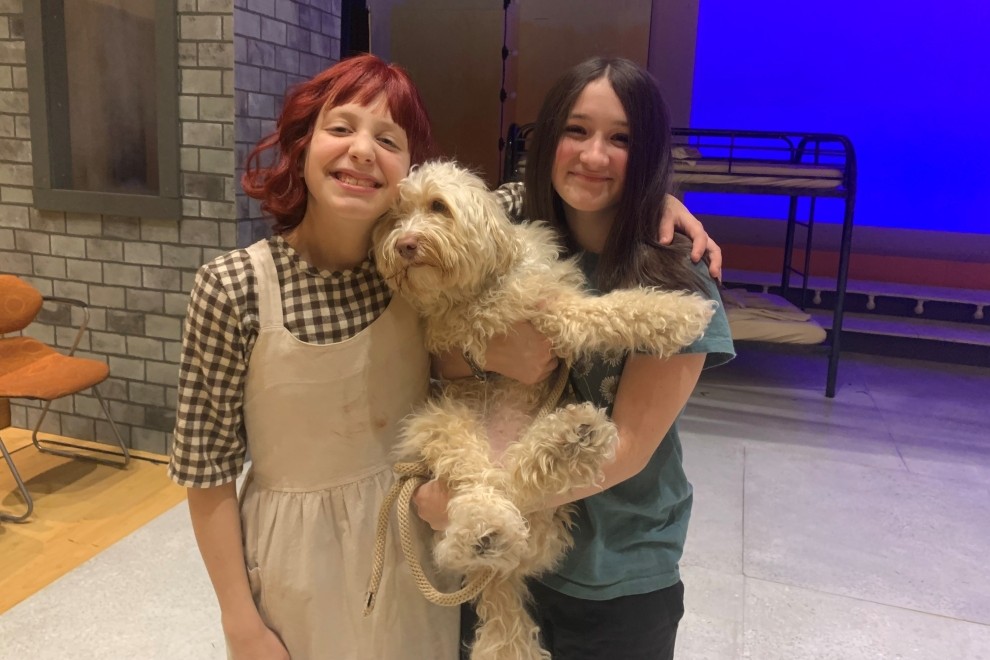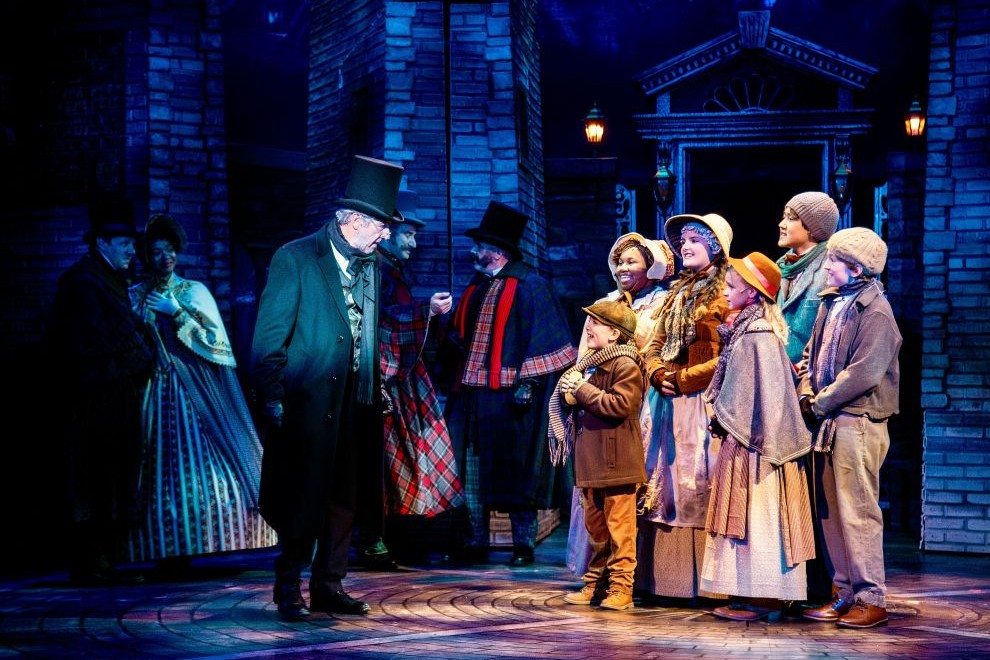
Kylie Clark shares her home with all types of creatures when she is creating props for Virginia Rep. The theatre’s current interim props master and puppet designer, Clark has just finished working on eight puppets for Virginia Rep’s current production of Knuffle Bunny: A Cautionary Tale.
Clark, an actress as well as a puppet designer, has always been interested in making things. She didn’t start crafting puppets until a friend who was directing a show at Riverside Center for the Performing Arts in Fredericksburg asked her to make a dragon puppet for a production.
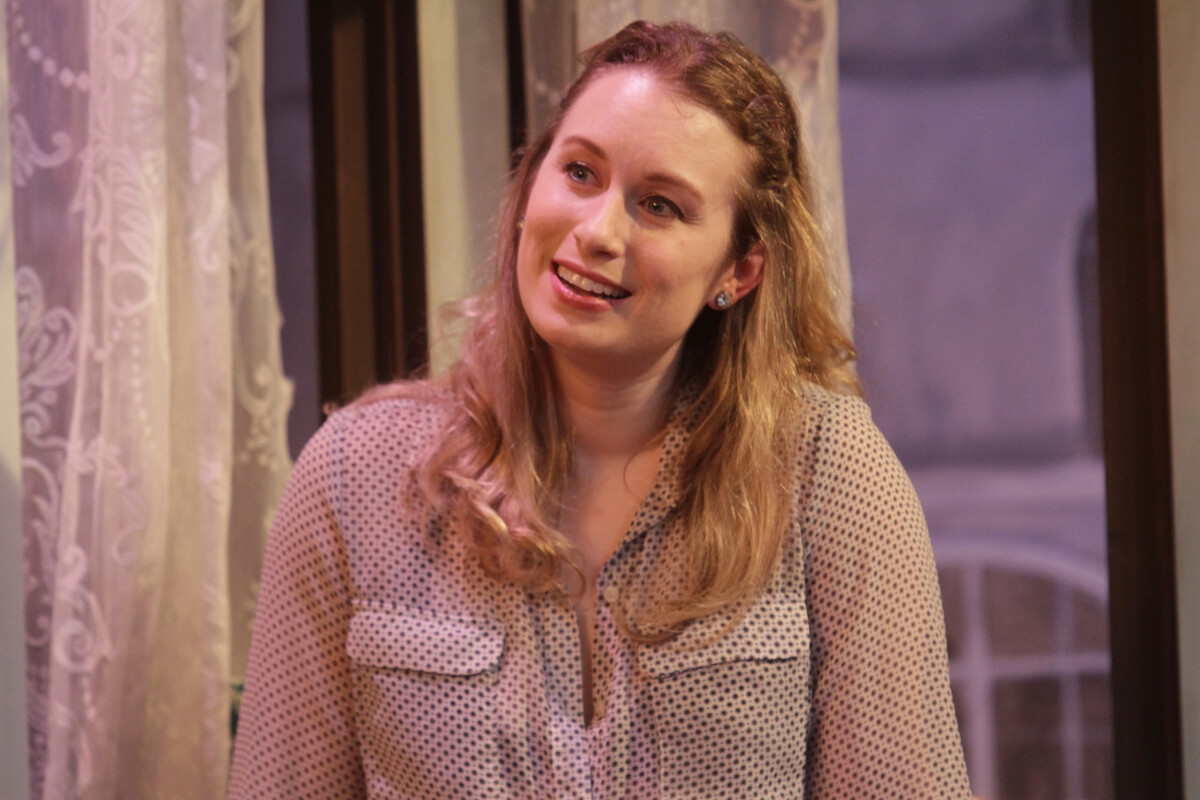
“They just wanted me to make the head of the dragon. It breathed fire and the eyes lit up,” she says.
Knuffle Bunny marks the first time she has worked as a props master for Virginia Rep. Last year, she acted in the theater’s production of Dancing Lessons at Hanover Tavern.
She starts the creative process by sketching out ideas. “Since I have done puppets before I am able to imagine ways the puppet will move based on what I have created,” she explains. “I need to figure out what the director wants the puppet to do and combine that with the way it’s supposed to look.”
When she’s working on the design, she tries to figure out what parts of her design might not function property so she can eliminiate design flaws before she starts building the puppet. “Every time I build a puppet I learn new things,” she says.
Her larger puppets are made of L200 polyethylene foam because it’s rigid but still has “some flex to it,” she adds. “You can create different shapes and they hold their shape well. It’s not very heavy and that makes it really useful for large-scale puppets.”
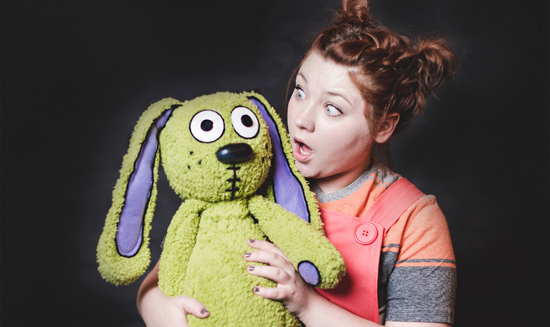
When she’s building the puppet, it’s important to know if the puppeteers will be hidden or exposed. If they are exposed, to what extent are they exposed? The over-six-foot dream Knuffle Bunny puppet used in the show is “manipulated from outside so you can see the puppeteer dancing him around,” she says, adding she can hide the puppeteers from view if that needs to happen.
When she is building a puppet with exposed mechanisms she tries to pinpoint the best way to highlight the mechanisms. With Knuffle, puppeteers reach under the bunny’s armpit to grab onto a PVC pipe that serves as the puppet’s spine. “The pipe runs up the middle so basically it’s a big lollipop on a stick,” Clark says.
It took her about two months to make all of the puppets for Knuffle Bunny. She loves the storyline her puppets help to illustrate. “It’s a simple story about a toddler who can’t communicate verbally. She goes to the laundry mat and loses her favorite toy,” she says, adding that puppet-making has ended up being “one of my favorite skills.”


